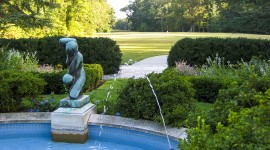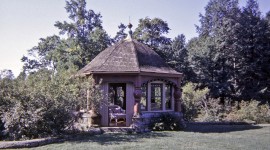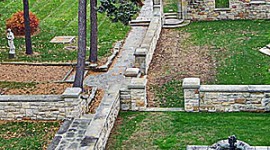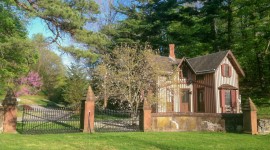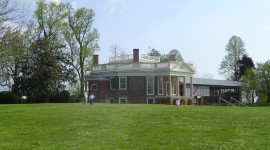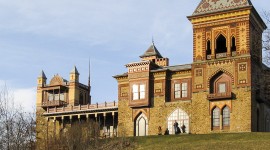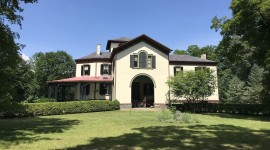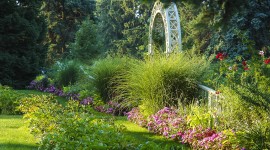Ornamental Farm
An agricultural estate combining the aesthetic priorities of the landscape garden with the utility of a working farm. The French term ferme ornée was appropriated by British and American landscape and garden writers. In eighteenth century England, one of the best-known examples of this type was William Shenstone’s The Leasowes. In Shenstone’s design and others that followed, a key element was a green circuit drive which could accommodate farm operations and double as a pleasurable driving experience for carriages or for riding. The addition of rare or ornamental trees and shrubs, pavilions, temples or pergolas was common. In the opening decades of the nineteenth century, Thomas Jefferson’s Monticello and James Madison’s Montpelier took on the characteristics of an ornamental farm. Andrew Jackson Downing’s model of the ornamental farm was concisely presented in his book, “A Treatise on the Theory and Practice of Landscape Gardening,” in which he devotes an entire chapter to the rural landscape. Frederick Law Olmsted, Sr., first as a gentleman farmer and then as a landscape architect, incorporated these ideas of productivity and beauty into his landscape designs.
To clarify, ornamental farms are not plantations: a plantation is an industrialized form of farming that depends on cash crops, typically just one. In 1860, only twelve percent of Southern farms could be classified as plantations.



